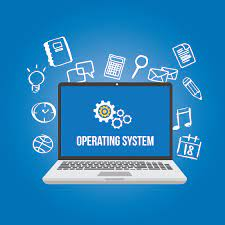An operating system is software that runs on a computing device and manages the hardware and software components that make up a functional computing system.
Modern operating systems don’t just manage hardware and software resources, they schedule programs to run in a multi-tasking manner (sharing the processor so that multiple tasks can occur apparently simultaneously), provide standard services that allow users and programs to request something happen (for example a print job) from the operating system, and provided it’s properly requested, the operating system will accept the request and perform the function needed.
Desktop and server operating systems are by nature more complex than an operating system that runs on a single-purpose device such as a firewall, or a mobile phone. From a simple set-top box that provides a menu interface for a cable provider, to supercomputers and massive, parallel computing clusters, the generic term operating system is used to describe whatever software is booted and run on that device.
Microsoft Windows
Microsoft offers different operating systems according to the machine’s role: desktop or server? The desktop version of Windows has undergone various naming schemes with the current version (as of this writing) being simply Windows 10. New versions of this OS come out every 3-5 years and tend to be supported for many years. Backward compatibility is a priority for Microsoft, even going so far as to bundle virtual machine technology so that users can run older software.
Windows Server currently (as of this writing) is at version 2019 to denote the release date. The server can run a GUI but recently Microsoft, largely as a competitive response to Linux, has made incredible strides in its command line scripting capabilities through PowerShell. There is also an optional Desktop Experience package which mimics a standard productivity machine. Microsoft also actively encourages enterprise customers to incorporate its Azure cloud service.
Apple macOS
Apple makes the macOS operating system, which is partially based on software from the FreeBSD project and has undergone UNIX certification. macOS is well known for being “easy to use”, and as such has continued to be favored by users with limited access to IT resources like schools and small businesses. It is also very popular with programmers due to its robust UNIX underpinnings.
On the server side, macOS Server is primarily aimed at smaller organizations. This low-cost addition to macOS desktop allows users to collaborate, and administrators to control access to shared resources. It also provides integration with iOS devices like the iPhone and iPad.
Some large corporate IT departments allow users to choose macOS since users often require less support than standard Microsoft productivity deployments. The continued popularity of macOS has ensured healthy support from software vendors. macOS is also quite popular in the creative industries such as graphics and video production. For many of these users, application choice drives the operating system decision. Apple hardware, being integrated so closely with the operating system, and their insistence on adherence to standards in application programming gives these creative professionals a stable platform to perform many computing-intense functions with fewer concerns about compatibility.





